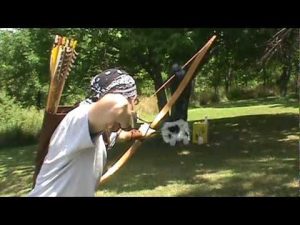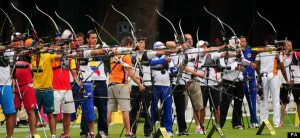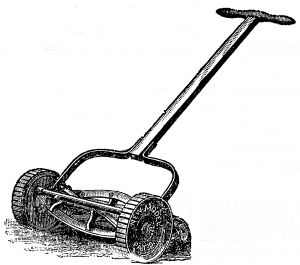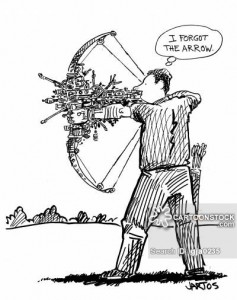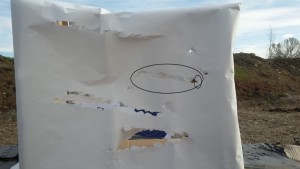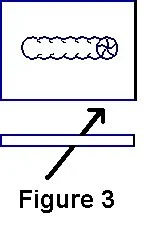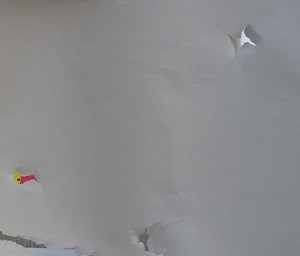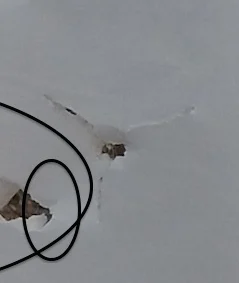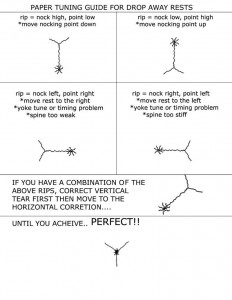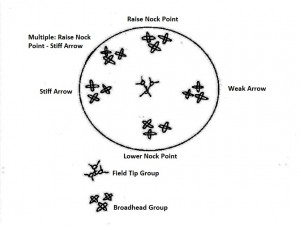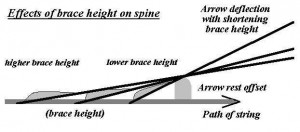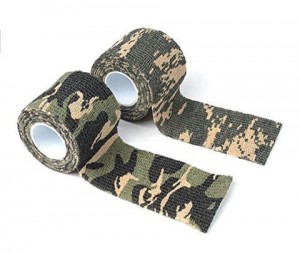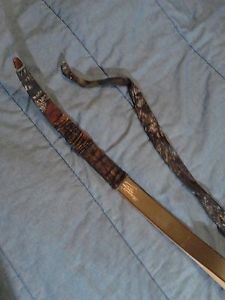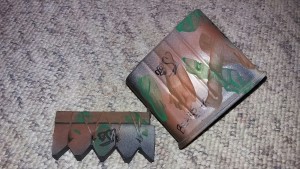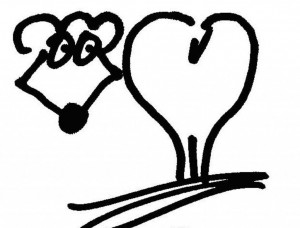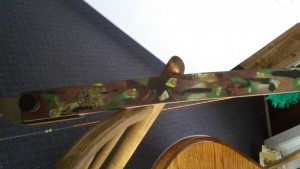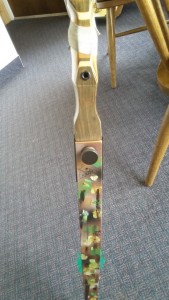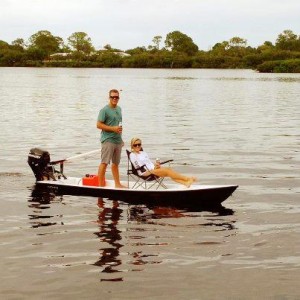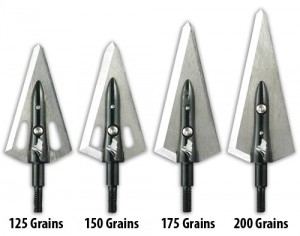The past couple of archery practice rounds in the field has found me experimenting with hunting situations. After all, that is my intent of doing all of this archery stuff in the first place, right? On Monday evening I had the place to myself and I shot 10 ends of 5 arrows in the usual fashion, standing tall, shoulders relaxed, a firm anchor, eyes fixed on the X etc., etc…and of course my arrows went where ever good arrows (and bad arrows) like to go. Some finding the mark and others finding somewhere else they would rather go.
After the session, I was still not tired of shooting and so I decided to start my “hunting training”. This is a little something I’ve been thinking about for awhile and even though the temptation to move back 10 yards was still in the back of my mind, I decided to stay at the 20 yard mark and move around a bit.
Let’s think about hunting for a moment. Chances are I will be sitting in a ground blind somewhere hoping that a deer or elk will come wandering my way. With that in mind, sitting would be how I would most likely have to take my shot. So, with a stump marking the 20 yard mark, I perched my Bears Butt’s butt on the stump. Sitting at a 90 degree angle to the target, I shot my 5 arrows. Of course I had to “cant” my bow so that the lower limb did not strike the ground. Much like the guy in the picture above. What came as quite a surprise was that all 5 arrows were very close to where I wanted them to hit.
In a college business class we read about a study that was conducted back in the 1930’s wherein they turned up the lighting in a production facility in order to see if that would increase productivity and the records show it clearly did cause an increase in productivity. In a follow-up study in the same place a year or so later, when productivity went slowly back to what it was before the lights were turned up, they dimmed the lights and sure enough, productivity went up….how can that be? Well, anyway, my point is, when you change something you can expect a change in the outcome. I can’t remember the theory’s name but it has one. I’ll make one up…The Hurculerian effect….that is not the real name but you get the idea.
So, were the 5 arrows being close to the mark a result of changing things up? Perhaps.
Well, I kept turning my butt on the stump until at one point in order to shoot at my target I was almost turned completely around and still the arrows came close to finding the X. Now, mind you, I’m shooting at a cut out of the center of a larger target. My target is about 8 inches across.
Well, not to be outdone by the stump sitting exercise, I started walking around the 20 yard mark, getting down on both knees, then with one knee up, switching which knee was up and on and on. I moved from 20 yards, to 25, out to nearly 30, shooting diagonally at the target….well, in general, I was having quite a time entertaining myself with this new way of practicing and before long I realized I had to go home and cook supper! But here again, my arrows were almost always finding their mark near or actually inside that 8 inch circle! I failed to take any pictures even though I thought about it several times that evening.
So, last night Sherry and I went down to the field range once again. I shot 5 ends of 5 arrows, while she shot all her ends with 6 arrows. After my 5th end, I decided to “do my thing” and mix things up a bit. I started with the stump sitting and then started moving around. I didn’t move around as much as I had the night before, as I was causing panic in Sherry, not knowing exactly where I was and what I was doing around her. I was being safety conscious the whole time and keeping her well being in mind the whole time…she just didn’t know that.
Pretty soon she had had enough and was wore out. It is sort of funny that when archery fatigue sets in, it sets in fast. You go from some very nice groups to wide groups and arrows flinging where you wonder how in the heck they could possibly go there. But for me, things were tightening up. The more I shot the better things were getting….what gives with that? I was feeling like I could shoot forever. Those 55 pound limbs must be weakening, as there was no fatigue what-so-ever!
Back to the “canting”…….Canting the bow means you turn the bow so the lower limb won’t hit the ground, or a stick, or a bush, or a anything that it might hit. I suppose, you would cant the bow if the upper limb would hit something as well….of course you would. Now, since I’m a right handed shooter, my canting has to be done with the top limb turned to my right. That way the arrow will stay on the arrow rest, or at least on the bow shelf somewhere. If I was to cant my bow the other way the arrow would fall off the rest and there would be no shot…..gravity has something to do with that.
I also found that while canting my bow, my anchor being very much the same as if standing erect (like an Olympic archer below)
I was actually looking above, but at the same time, down the shaft of the arrow, even though it was not in sharp focus, but certainly in my vision as I stared at the X on my 8 inch target. I got the feeling that as I stared at that X, the bow would rise and/or lower to accomodate the distance to the target and then upon release the arrow would arch toward the X and sometimes actually hit it! I was having a pretty good time. My arrows were actually trying to go where I was looking. Have I just experienced one of the plateaus in archery I have read about? You know, you go from not hitting the bale, to all the arrows hitting the bale, then to hitting the full size of the paper the target is printed on, to hitting the circles drawn on that paper, to hitting certain rings within the drawn on target etc., etc. And then come consistency…plateaus happen with that as well and some archers give up on themselves it they can’t break through whatever it is that causes them to not hit what they are shooting at. Not me! I’ll shoot no matter what and someday it will straighten itself out. I’m a Plucker and if that is what I do, so be it, as long as I pluck and hit somewhere close to where I want to hit, call me Bears Butt the Plucker!
Anyway, back to the subject….what is the subject?……Oh ya, me walking around shooting, sitting and shooting, kneeling and shooting…hunting situation stuff. So, Sherry and I are shooting and she got tired. I was still going strong and decided to shoot a couple more ends. I was feeling very good about the whole thing. Not tired. Not feeling the usual strain of the 55 pound limbs. My anchor was coming to my jaw just like it should. My head would cock to one side and find that anchor and the string would find my nose. AND best of all, the arrows seemed to find their mark. Here is my last end from last night!
I wish I could do that every time!
Maybe I need a hat like the guy in the picture above!
April 20, 2016
Bears Butt
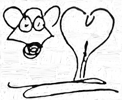

 Utah Fishing Reports
Utah Fishing Reports